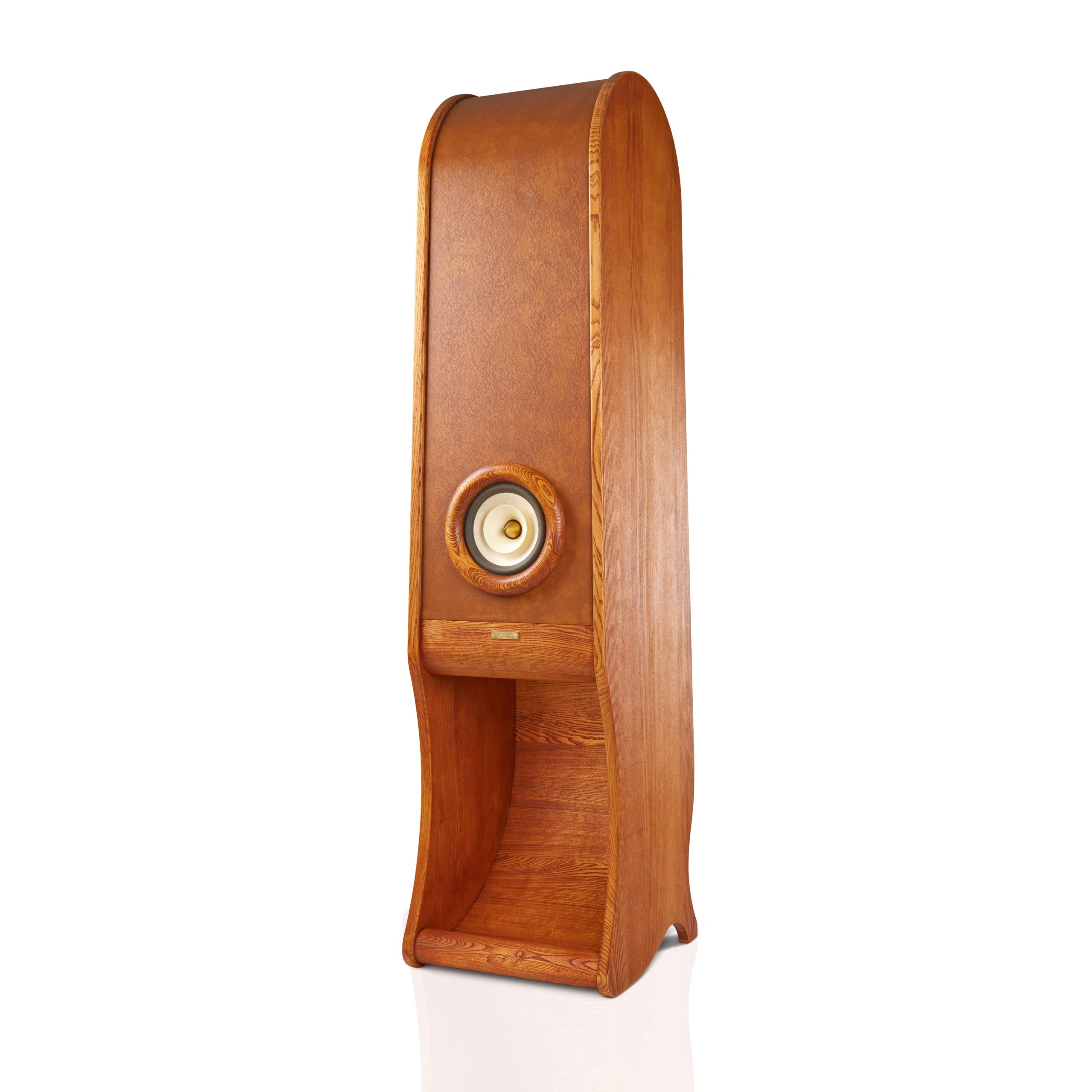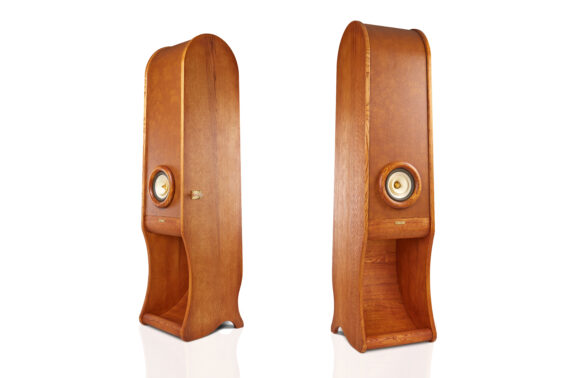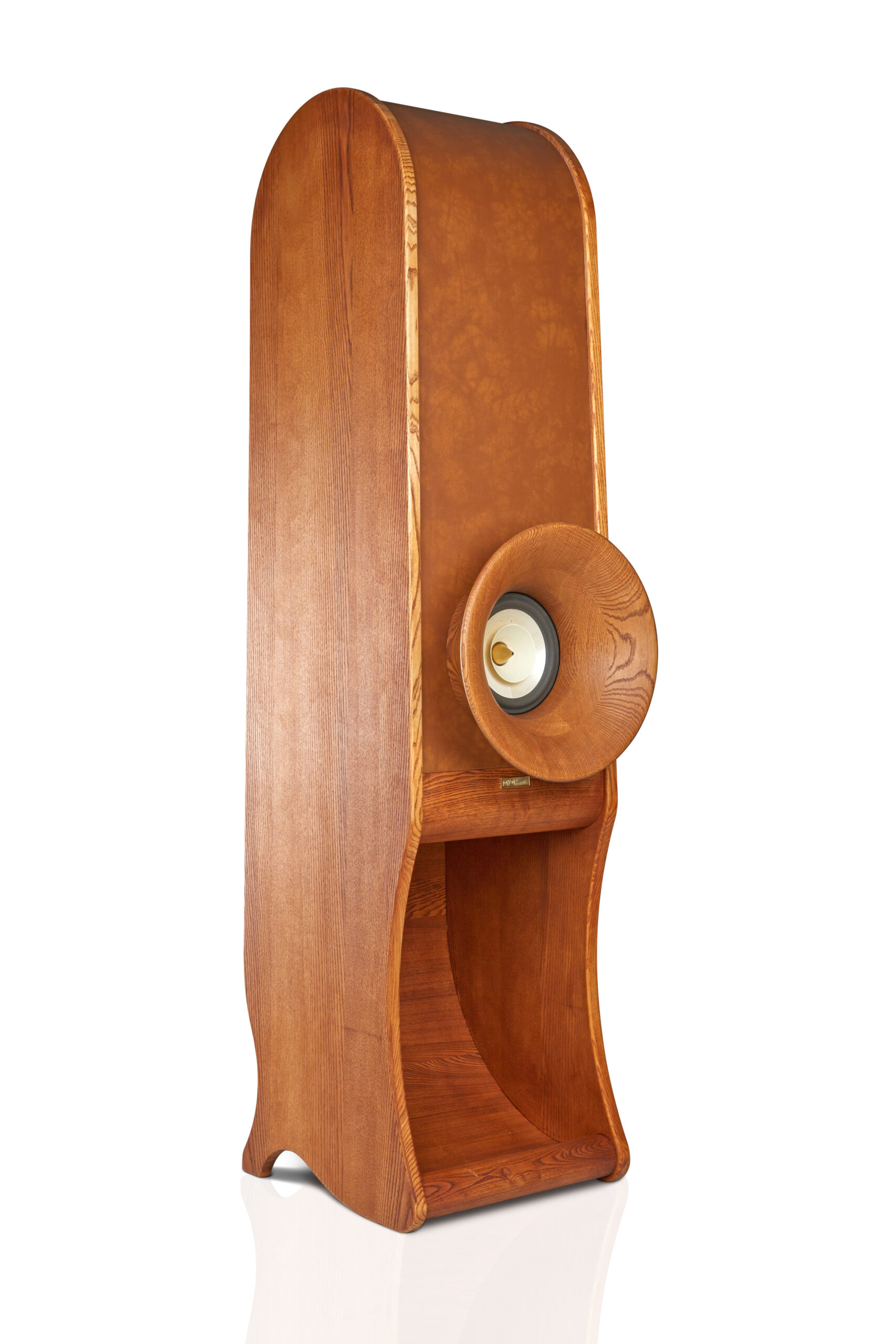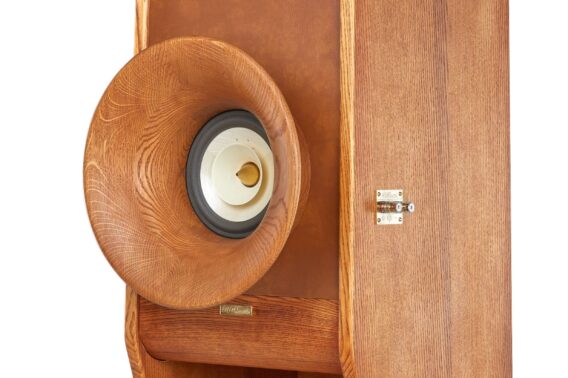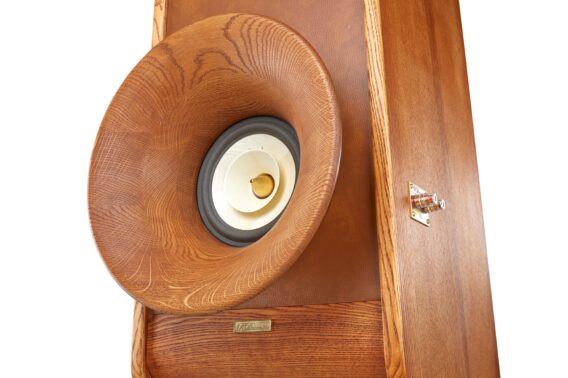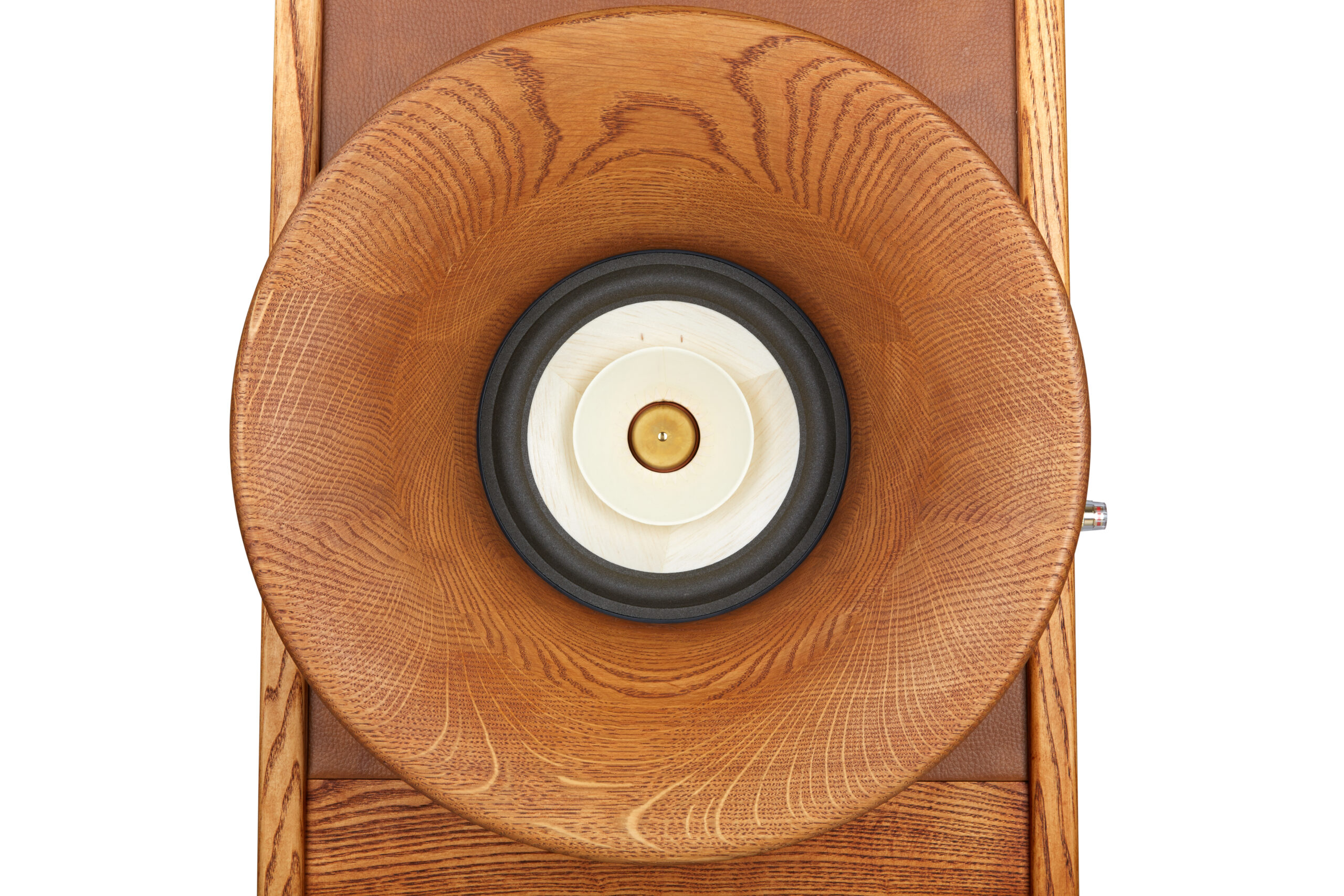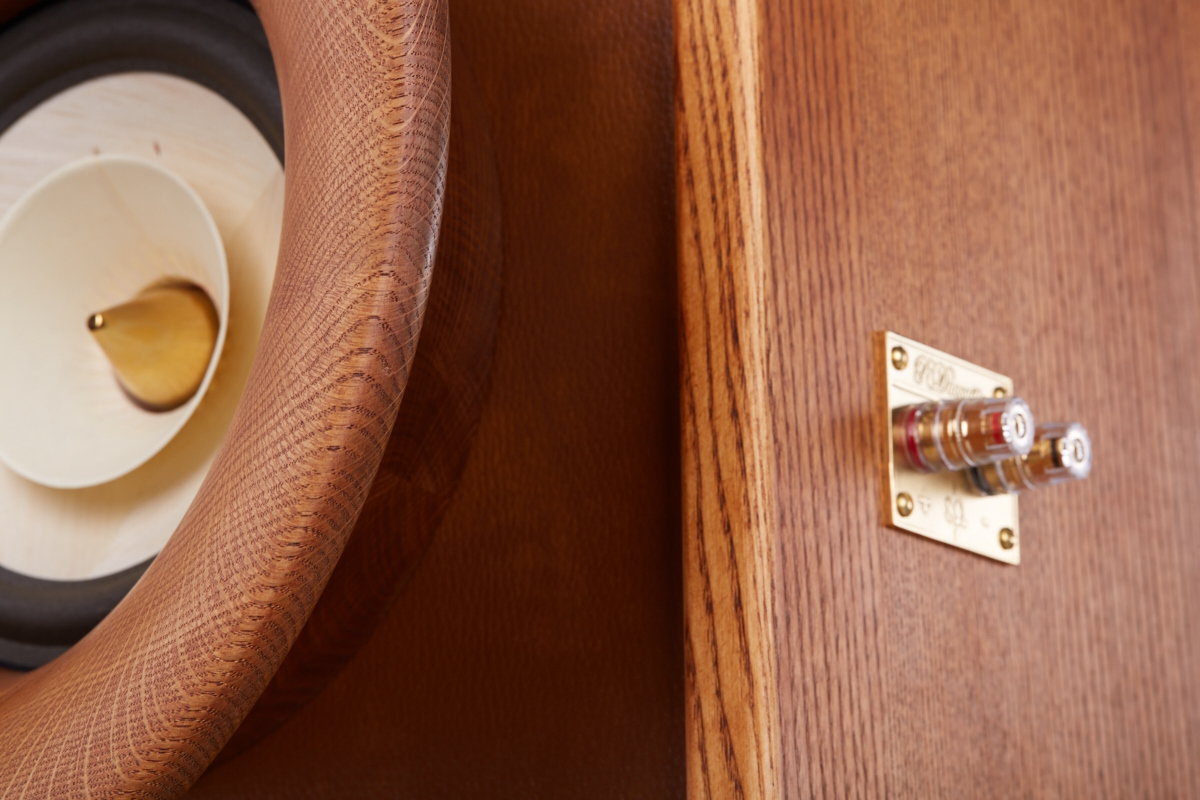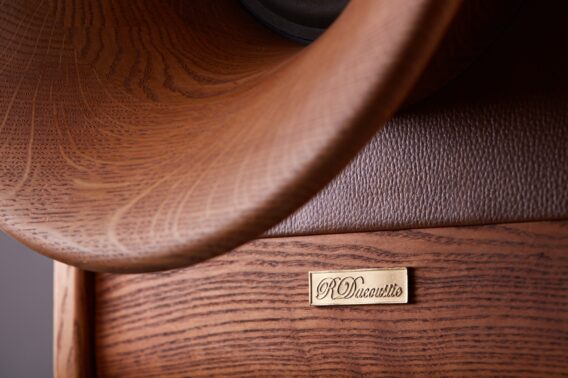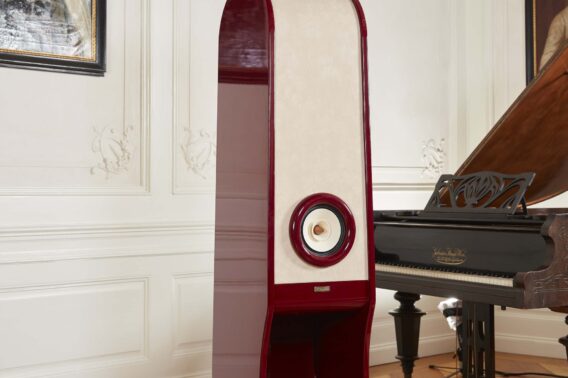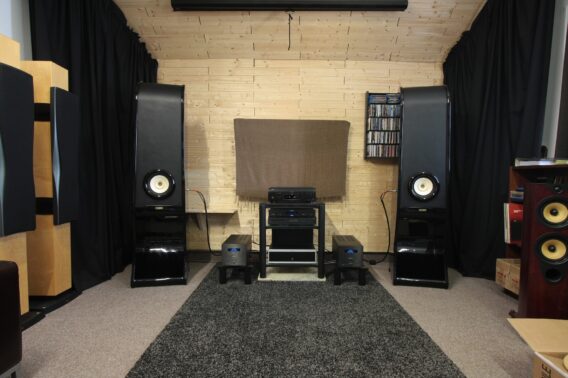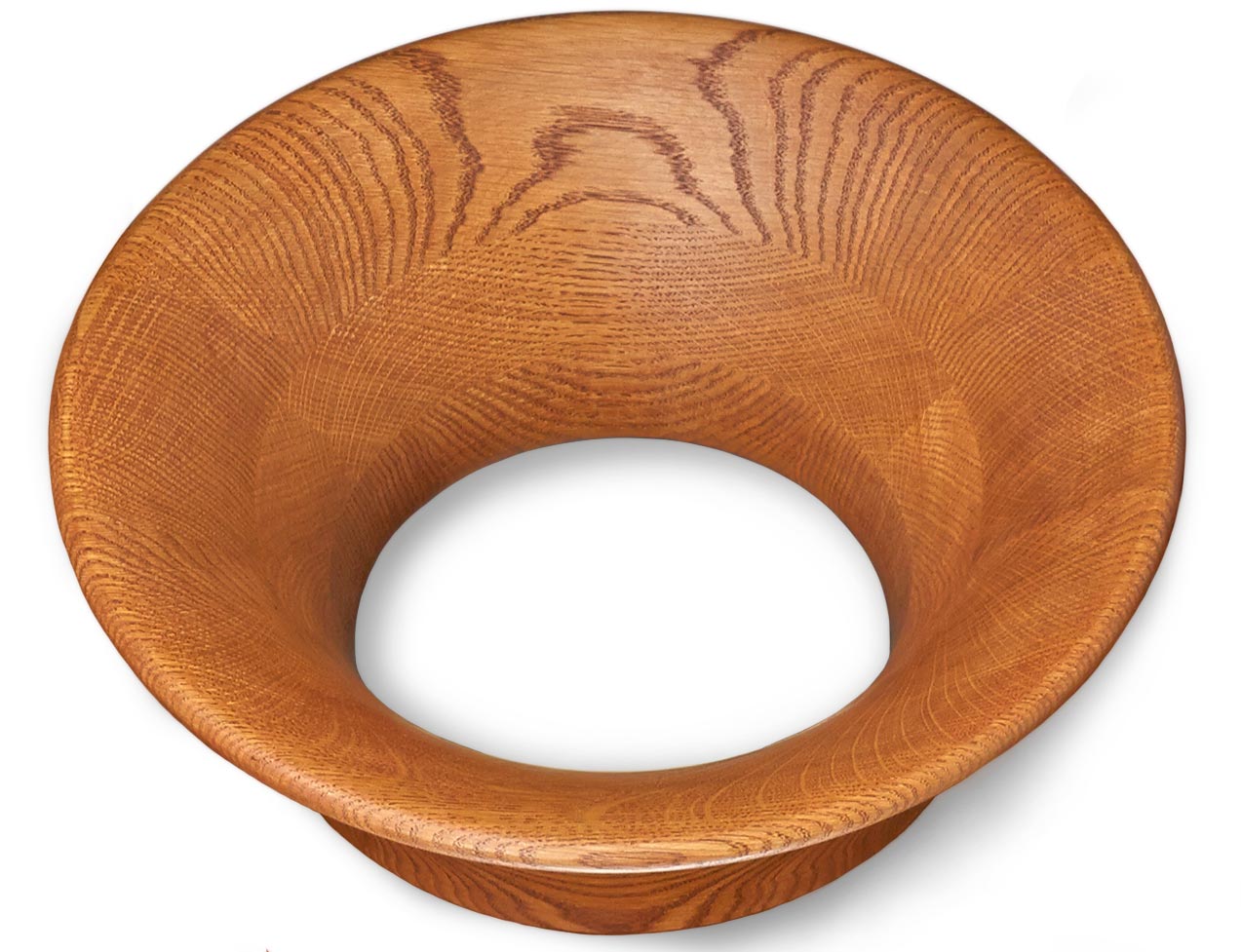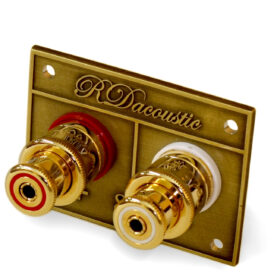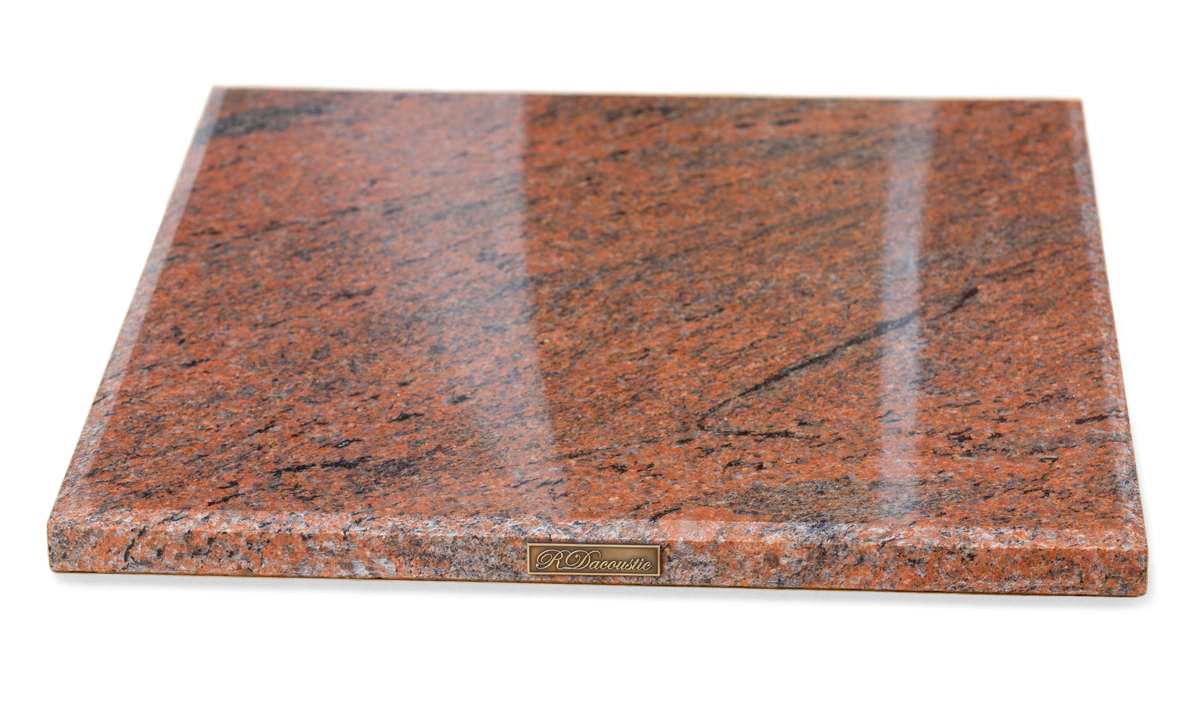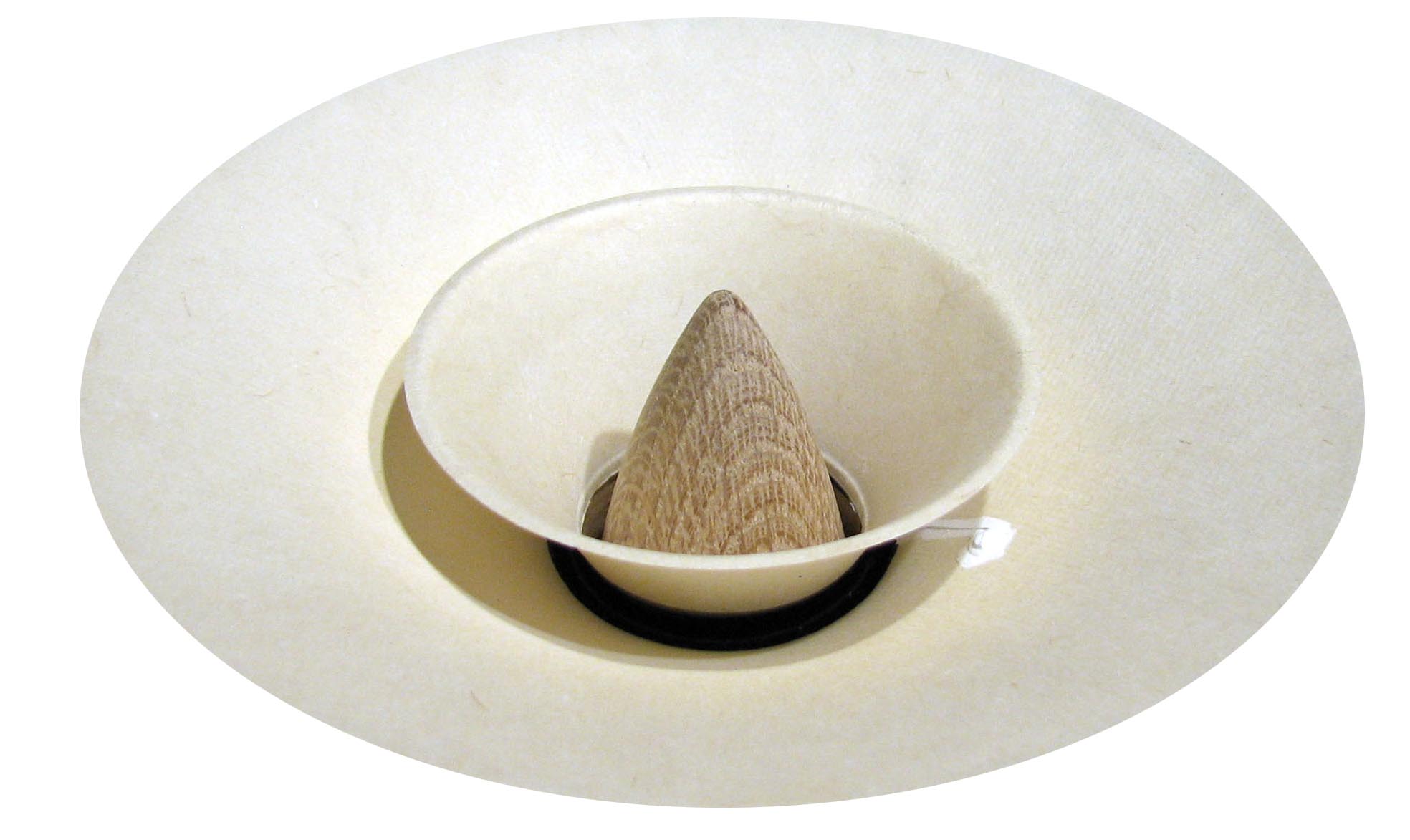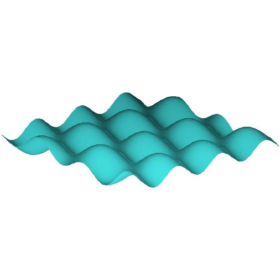High End Speakers Evolution
Our high end speakers Evolution were created with the intent of redefining what “faithful stereo sound” means. Their sound is characterized by full details, precise instrument localization and spatiality. They contain only one high sensitivity driver, complemented by a unique horn cabinet.
Inspired by the past, formed by the present.
High End Speakers Evolution
Precise solution without even one construction compromise. Art Deco style design in symbiosis with functionality. Beauty and functionality in simplicity.
Parameters
| Sensitivity: | 98 dB |
| No crossover: | Ensures outstanding spatiality and instrument localization. |
| Connection terminals: | Next to the driver for the shortest possible signal path. |
| The cabinet: | Cut from a 25 mm thick Ultra-HDF board using a 5D CNC milling cutter—the only way to achieve the very high hardness and precise shape of the baffle. |
| Height: | 180 cm |
| Width: | 45 cm |
| Depth: | 50 cm |
| Weight: | 2 x 75 kg |
- The front and rear walls are padded with cushioning material which absorbs any unwanted vibrations of the horn.
- Thanks to a coherent design, the driver can be easily demounted. Customers who wish to experiment with different drivers are not limited by the construction of the horn baffle.
Patented design
The design of the Evolution speakers is patented and protected under the European industrial design no. 003028331-0001.
Accessories
The front horn can partially compensate for proper acoustics of the listening space. It improves the sound in overly subdued rooms with minimal reverberation.
Made of solid oak wood for its hardness and ideal acoustic properties.
Our customised production can be supplemented with these top notch gold-plated WBT interconnecting terminals. The patented 4mm banana/fork clamping system guarantees perfect lossless power transmission.
The phase stabilizer is an addition to the Evolution or Euphoria speaker drivers. It affects the direction and radiation response of the driver at high frequencies.
Reviews and videos
The more I listen to this recording the more enamoured I become of this speaker’s ability to make you feel you are listening to real musicians playing in real space before you… the vocal is truly stunning!
With wooden ears on [note: the Oris 500 front horn], the outcome is quite horn-alike, which for many enthusiasts is something to die for.
“David Brubeck’s “Take Five” (…) was a real eye-opener. All the instruments were sketched precisely, yet not clinical at all, and had a very vivid appearance in a remarkably convincing, big and open soundstage.”
You feel like sitting in the first row at a concert. (…) [The listening] gives you an amazing insight into the recording—you know exactly where each musician is standing, instruments have real size and most importantly, very accurate spatial anchoring including, for example, reverberation of the cymbal, realistically depicting the entire recording room.
At the first catch, the Evolution speakers enthrall by detailed rendering of midrange and clean, open heights, balanced sound and excellent space reproduction with precise instrument localization. One, that is usually unheard of even in the world of high end.
Instead of sounding tied down hard with comealong winches whilst sucking air through a narrow port tube (…), the Evolution with its large horn mouth and single driver behaved like an enormous heaving organism blessed with huge lungs.
FAQ
Why not use a crossover?
In standard multi-band speaker constructions, crossovers divide the signal, pointing it to individual drivers, so that a tweeter reproduces the heights only, a mid-range driver only the mids, a woofer only the bass component. The entire bandwidth is therefore separated into individual bands, between which some phase shift always occurs. This, to some extent, limits the possible perception of details in the sound and spatial localization of musical instruments.
Capacitors are used in the crossover. Because of their capacitance, they delay the signal phase at the dividing frequency by as much as 90°. Conversely, coils, which are used as well, shift the signal phase forward by as much as 90°, because of their inductance. Physically, the driver membranes move against each other at the dividing frequency and their acoustic pressure is being subtracted. The human ear is most sensitive exactly to the dividing frequency between the mid-range driver and the tweeter. Human hearing localizes spatiality according to the difference in volume and phase shift of the signal the right and the left ear intercepts. Full-range speakers do not use a crossover and they do not shift the signal phase.
How does the horn cabinet work?
The basis of a speaker with a full-range driver is a horn baffle. Quite a long time has passed since people first took notice of the acoustic properties an expanding animal horn has. Edison’s famous invention of the phonograph (1877) and ten years later the first gramophone, also both used the principle of an exponential horn baffle.
Our Evolution speakers are equipped with a fine-tuned horn cabinet which uses the energy of the rear part of the driver membrane. The horn is designed in such a way that it amplifies the bass component of the signal where the driver itself is starting to lose efficiency. The baffle also serves as a dynamic brake for the vibrational system of the driver membrane. Standing waves, which often occur with horn constructions, are minimised thanks to a very precise tilting of the side walls. The first compression chamber of the baffle is carefully shaped in a way that only the bass component progresses to the horn itself, exactly in phase with its exciter, the driver.
The physical principle of the exponential horn baffle
The exponential horn baffle provides for an improved efficiency of the contact between the driver membrane and the surrounding air. It can be thought of as an “acoustic transformer,” which provides for impedance adaptation between the dense material of the driver membrane (paper, metal, wood) and the less dense air all around. This results in higher efficiency of the acoustic power transfer of the driver. Angular coverage (or the radiation pattern) of the horn baffle is determined by the baffle’s shape, length and the length of the rounding at its end. The angular coverage also depends on the radiated frequency. You can read about the history and theory of the horn baffle on our Audio blog.
Why are the Evolution speakers so tall?
The lowest achievable frequency of the horn baffle is limited by its length. The longer the baffle, the lower the achievable frequency. The surface size of the driver membrane, its density, and the overall dynamics of the system are also important. These systems have to be balanced—a baffle which is too long (against the driver membrane surface size) loses dynamics in low frequencies.
Following a long time development (or evolution, if you will) and a range of tests, we arrived at this precise size and shape of the baffle, ideal for the highly sensitive 8″ full-range drivers we use. Evolution’s platform takes only 45 x 50 cm—not too much space on the floor in comparison with conventional loudspeakers.
From our blog
Why do our ears dislike the clean curve produced by an electronic tone generator?
The principle of a horn cabinet (also known as horn baffle or transline) has been known for a long time. The Maya, the Celts and Egyptians (even in the predynastic period) were able to use the physical properties of a hollow animal horn
To understand sound behaviour in closed space better, we have to get into a bit of theory.
Newsletter
We'll let you know about our participation in audio shows, new reviews and products, new places to listen to your speakers, or new posts on our blog. We won't spam you.
